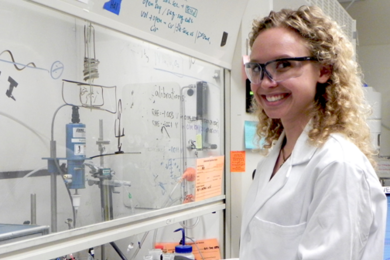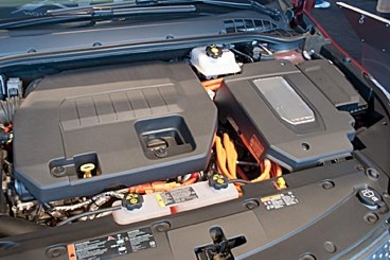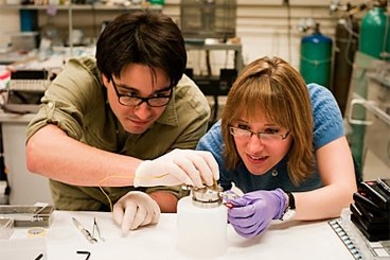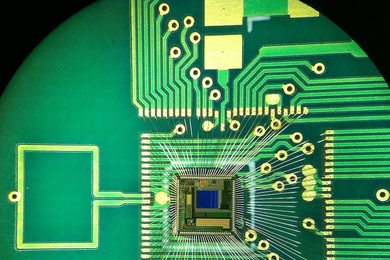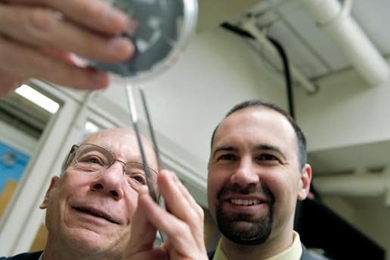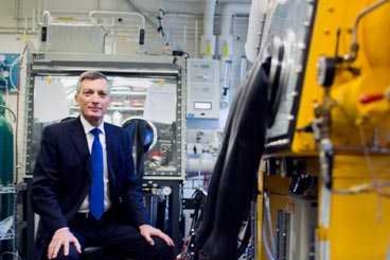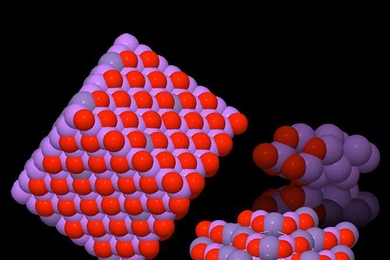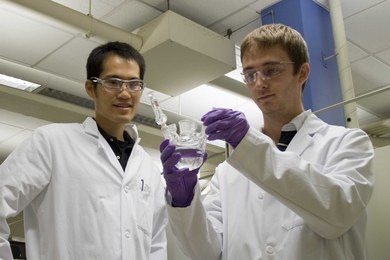Crash-testing lithium-ion batteries
Laboratory crash tests show both vulnerabilities and ways to improve the safety of lithium-ion batteries used in electric and hybrid vehicles.
Research update: Team observes real-time charging of a lithium-air battery
Imaging reveals what happens during charging; could lead to improved batteries for electric cars.
Medical devices powered by the ear itself
For the first time, researchers power an implantable electronic device using an electrical potential — a natural battery — deep in the inner ear.
New technique reveals lithium in action
Fundamental reactions behind advanced battery technology, revealed in detail by advanced imaging method, could lead to improved materials.
Taking an innovative approach to battery design
Donald Sadoway’s radical rethinking of electricity storage could revitalize renewable-power technologies.
Revealing how a battery material works
MIT team uncovers a reason why the hottest new material for rechargeable batteries works so well.
Need a new material? New tool can help
Exhaustive reference system and interactive toolkit could revolutionize materials research, potentially enabling new types of manufacturing.
Highly efficient oxygen catalyst found
New catalyst, made of inexpensive and abundant materials, could prove useful in rechargeable batteries and hydrogen-fuel production.
A systematic way to find battery materials
New understanding of high-performing cathode compound could facilitate rapid evaluation of improved alternatives.
How to choose a catalyst
MIT researchers provide a simple principle to predict which materials will perform best in fuel cells and metal air batteries.
Extreme electric racing
MIT’s eSuperbike charges up for an eco-friendly edition of the Isle of Man motorcycle race.
